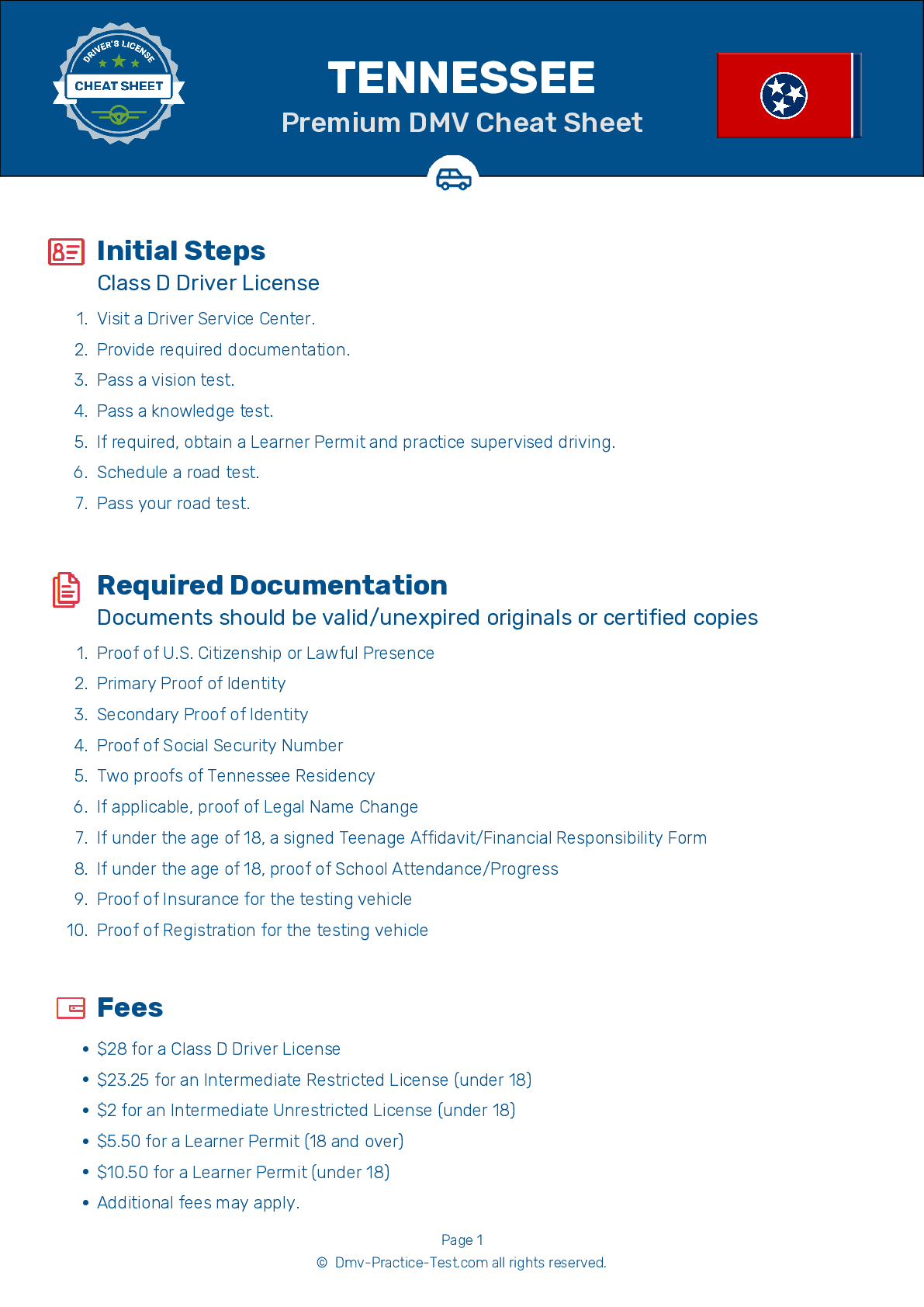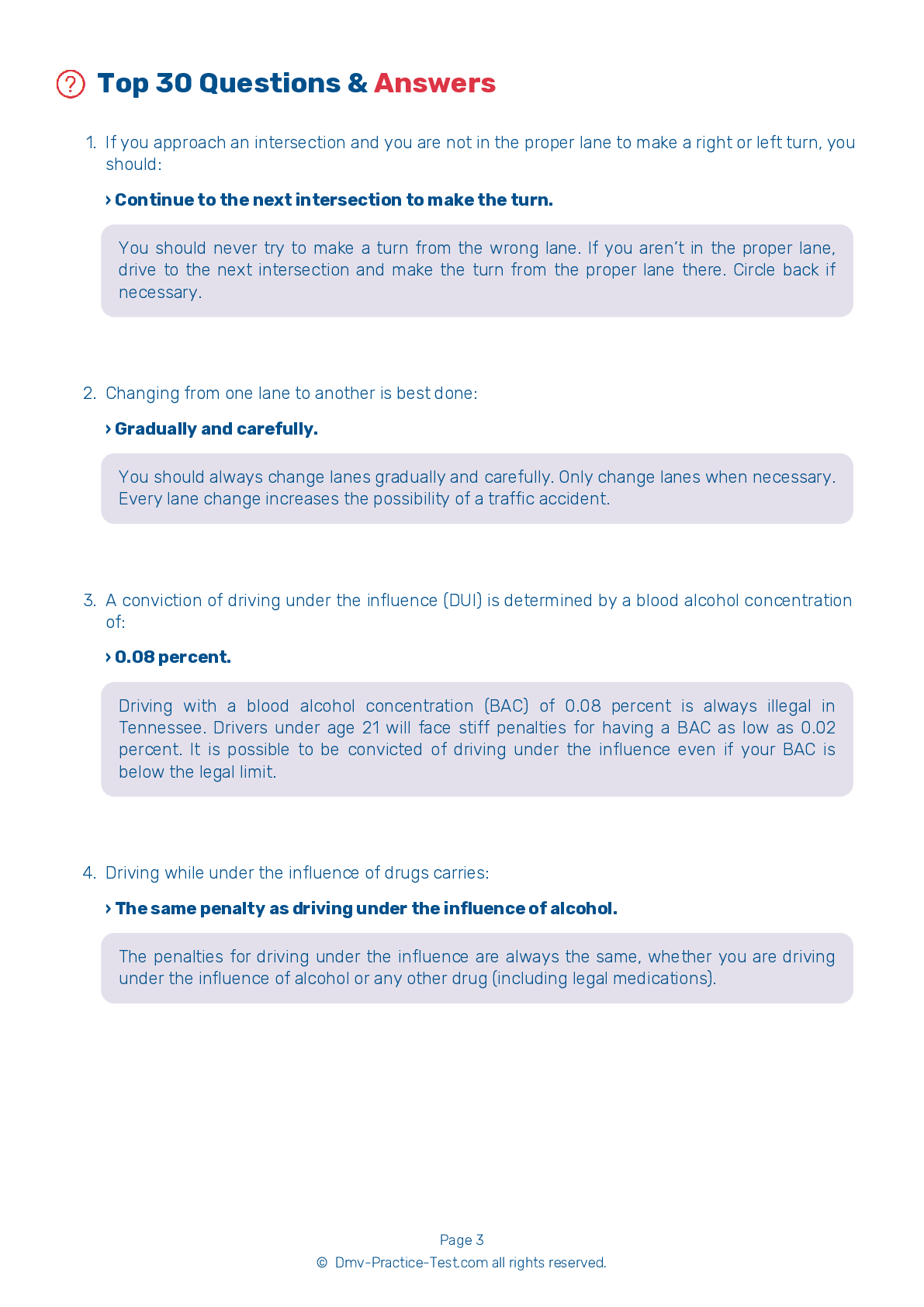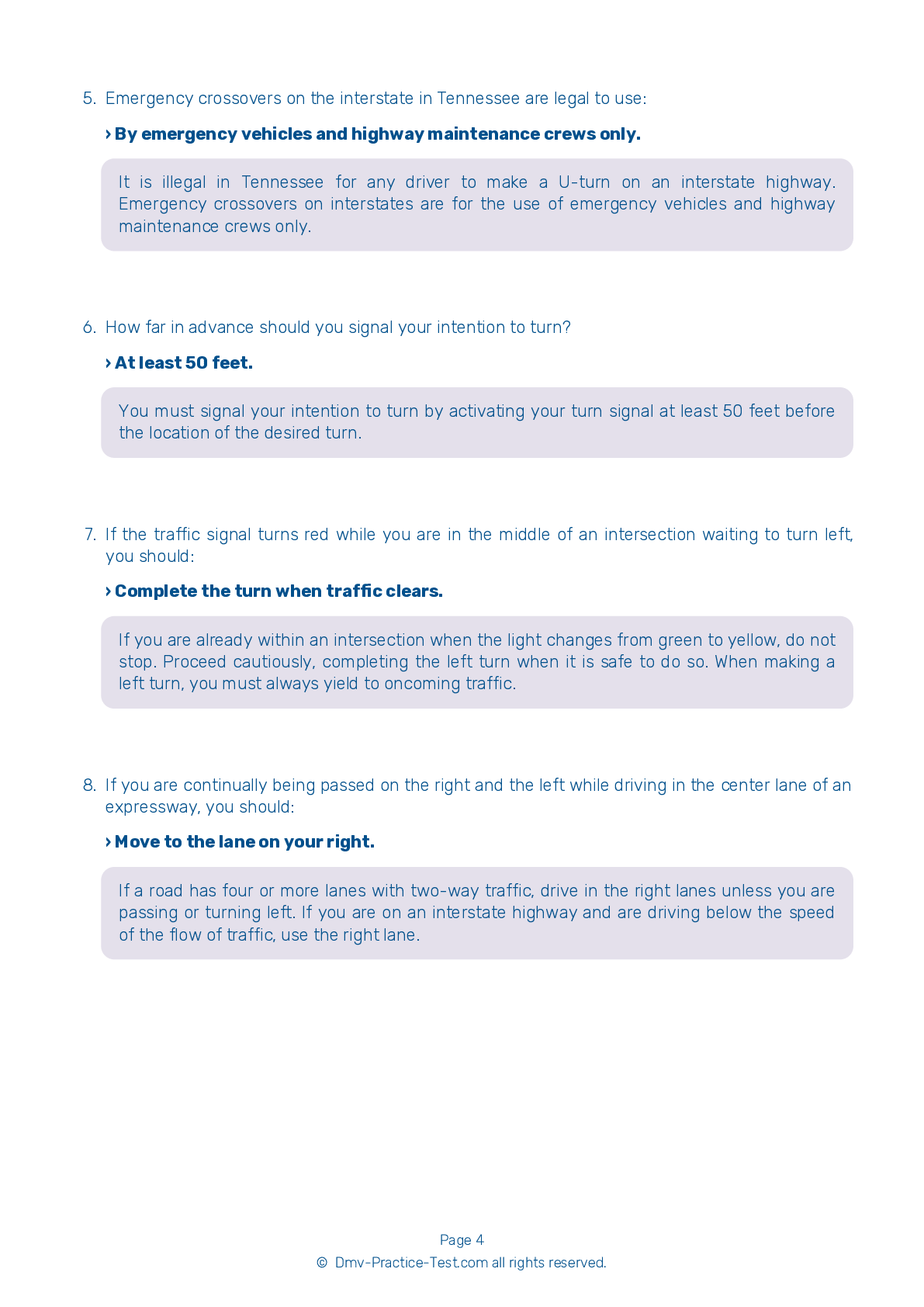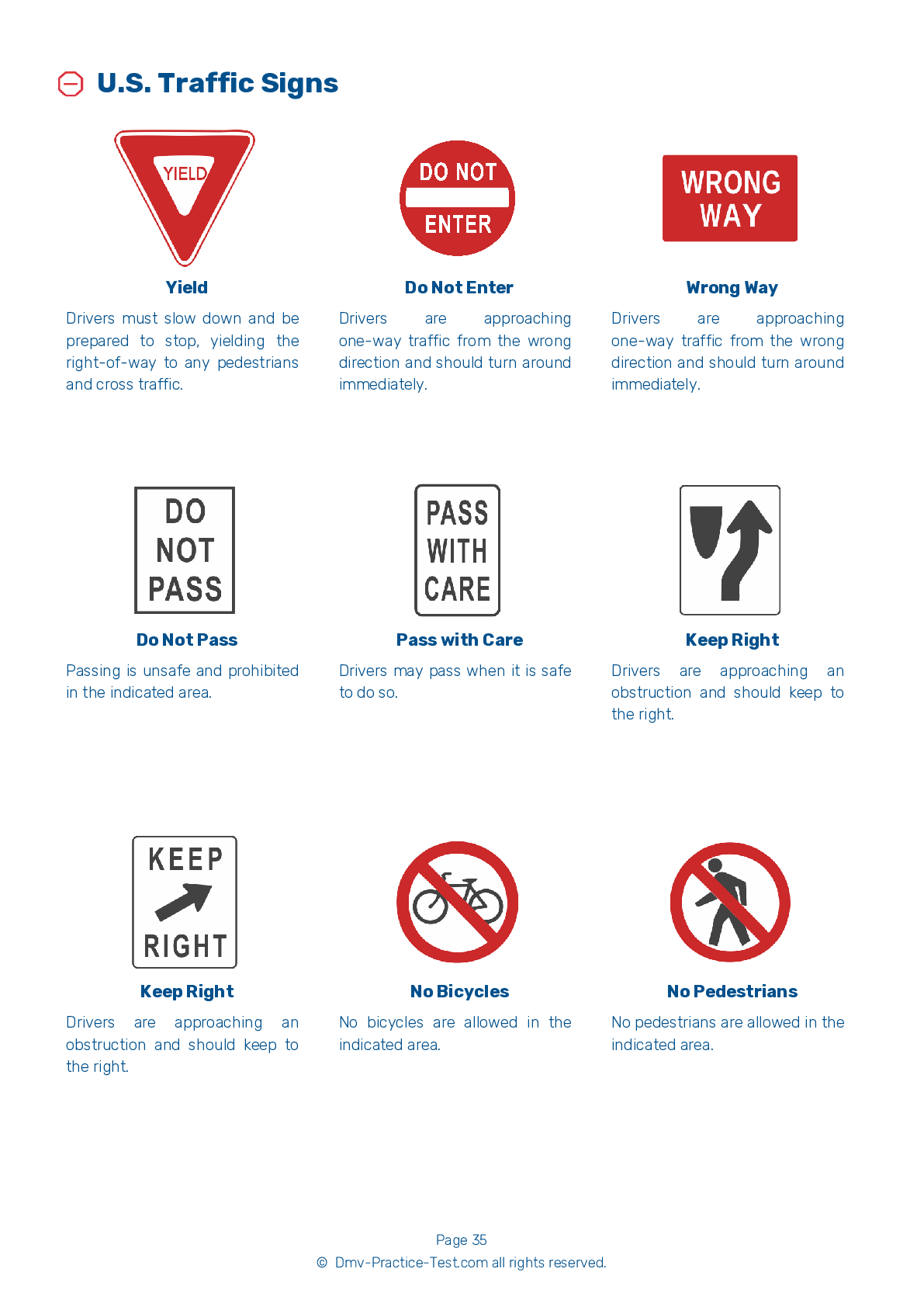FREE Tennessee DMV Practice Test #1
The Tennessee DMV practise exams for January 2025 have been updated. It includes questions based on the most important traffic signals and laws for 2025 from the Tennessee Driver Handbook. To study for the DMV driving permit test and driver's licence exam, use actual questions that are very similar (often identical!) to the DMV driving permit test and driver's licence exam.
Each question on the practise exam has a tip and explanation to help you recall the ideas. Questions about traffic rules, traffic signs, and driving statutes, as well as knowledge from the Driver Handbook, will be included in the written portion of the official Tennessee DMV test.
You must properly answer 24 of the 30 questions to receive a passing mark. Use the Tennessee Department of Motor Vehicles' practise exam to help you prepare for your instruction permit or driver's licence.
The DMV exam is offered in a variety of languages.
Using any form of testing help will result in an automatic fail, and the DMV may take further action against your driver's licence, so avoid it.
1 . A broken yellow line between two lanes of traffic means:
Dashed yellow lines separate single lanes of traffic moving in opposite directions. Passing is allowed when there is no oncoming traffic in the passing lane.
2 . To avoid hydroplaning while driving in rainy conditions, you should:
When driving too quickly in wet conditions, your tires may lose all contact with the road surface. Loss of traction will cause the vehicle to ride on top of the water, which is called "hydroplaning." The best way to prevent this from happening is to drive more slowly in rainy or wet conditions than you would when driving during ideal weather conditions.
3 . This road sign means:
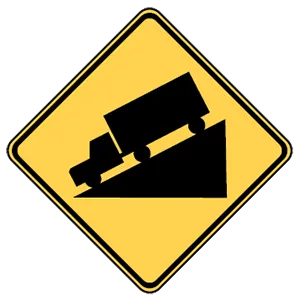
Warning signs provide notice to road users of a situation that might not be readily apparent and are usually yellow with black markings. This sign warns drivers of an upcoming steep hill. Drivers should adjust their speed accordingly to avoid collisions and brake damage.
4 . When driving on gravel or dirt roads:
Your tires do not have as much traction on loose gravel and dirt roads as they do on concrete and asphalt roads. When driving on gravel or dirt, you must slow down. It will take you much longer to stop and it is much easier to skid when turning.
5 . You enter a designated turn lane to make a left turn at an upcoming intersection. There is oncoming traffic. You should:
When making a left turn, you should always begin signaling about 100 feet before the turn. You should keep your front wheels aiming straight ahead until it is safe to start your turn. This ensures that you will not be pushed into oncoming traffic if another vehicle hits you from behind.
6 . At a railroad crossing, you must:
You must approach all railroad crossings with extreme caution and cross only when you know that no train is coming from either direction. Be aware of vehicles that must stop at all railroad crossings, such as school buses and trucks carrying hazardous materials.
7 . As you approach an intersection with a flashing yellow light:
A flashing yellow light means that you should slow down, check for cross traffic, and proceed with caution.
8 . When you are behind a motorcycle, you should:
When following a motorcyclist, allow for at least a three- to four-second following distance. Motorcycles can stop quickly and following them too closely endangers your life and that of the motorcyclist. If the motorcyclist should fall, you need extra distance to avoid the rider. The chances of a fall are greatest on wet and icy roads, gravel roads, and metal surfaces such as bridges, gratings, and streetcar or railroad tracks.
See the exact questions that will be on the 2025 Tennessee DMV exam.
99.2% of people who use the cheat sheet pass the FIRST TIME
LT gives us an insight on how the cheat sheet provided her with all the study questions she needed before taking her test.
Joe initially studied with the handbook and failed his test, he eventually found us online, studied and pass his test the first time around.
